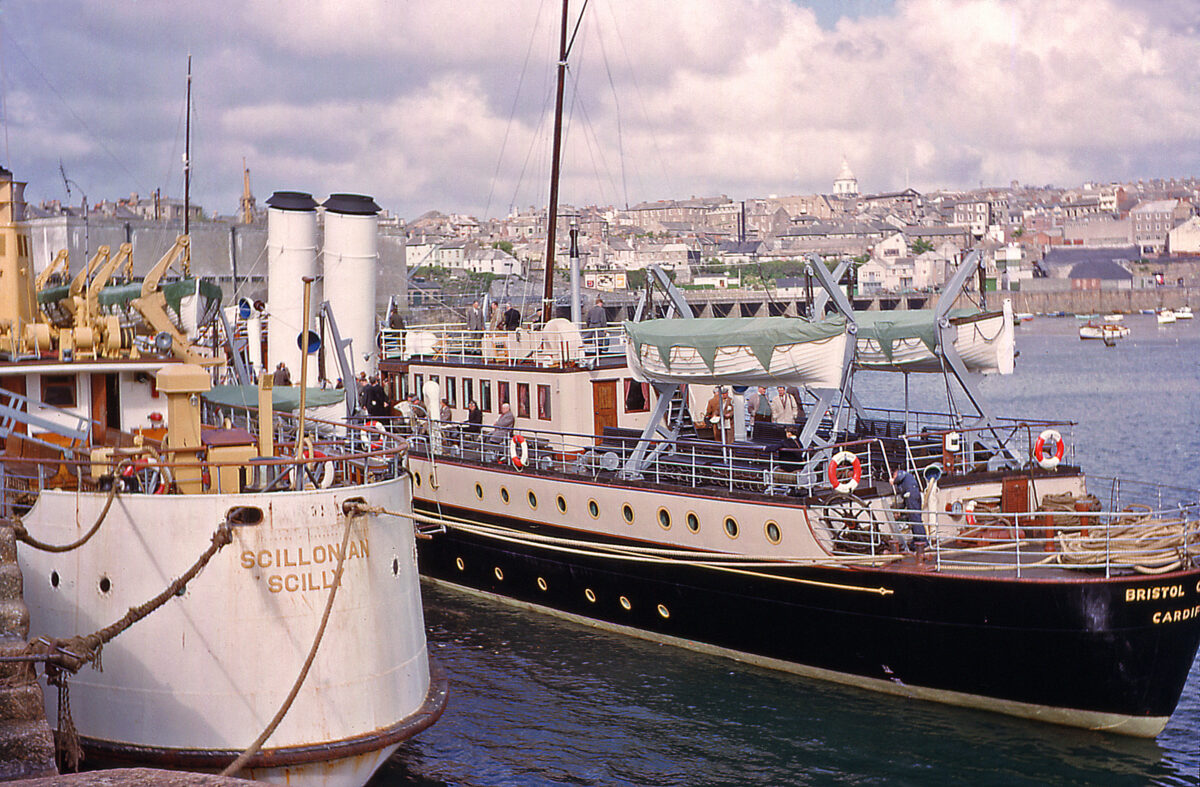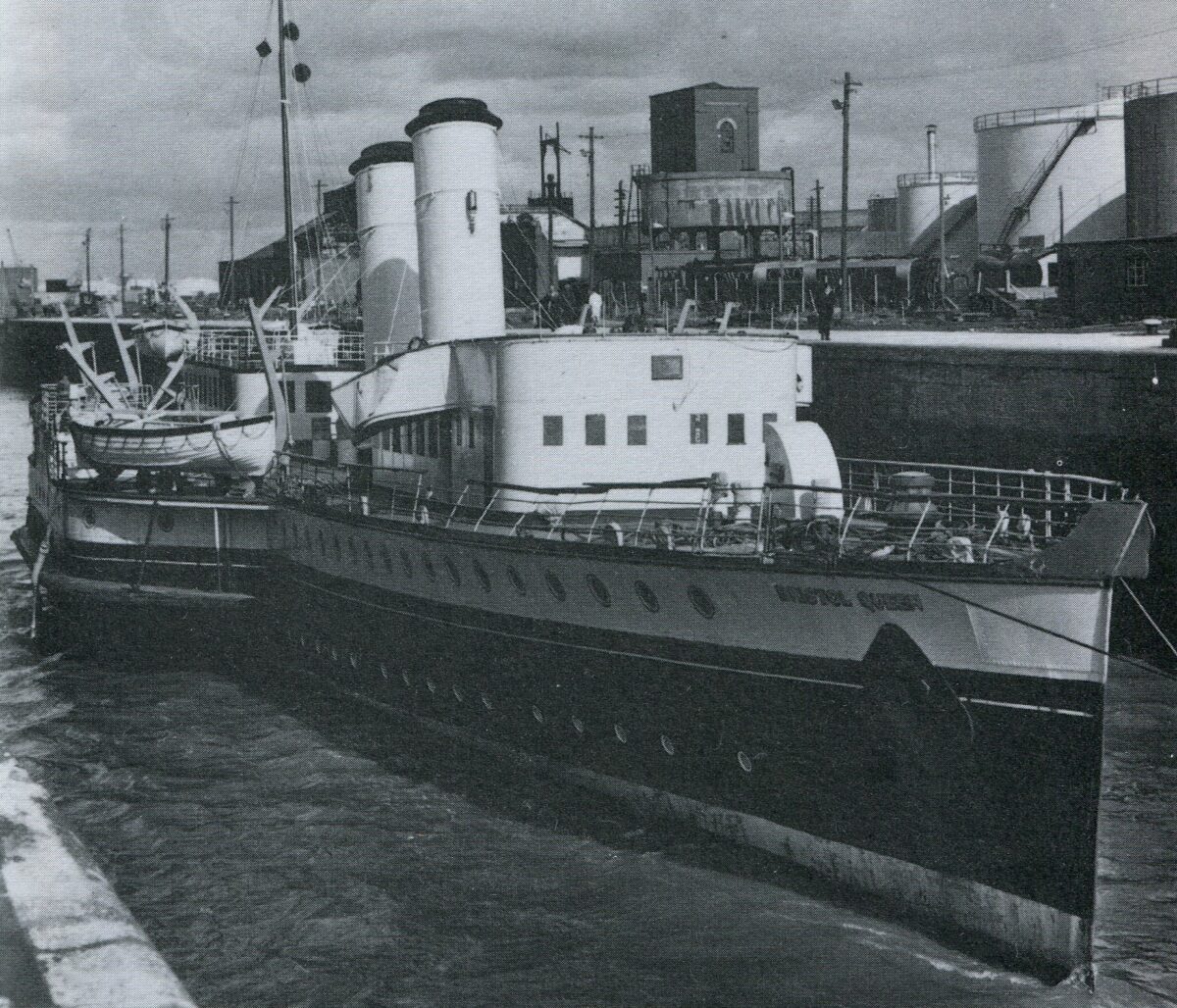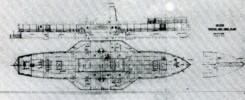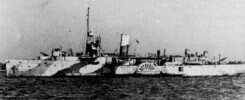
On Sunday 14th January 1968 whilst lying alongside and up for sale P & A Campbell’s Bristol Queen was rammed by the Liberian oil tanker Geodor which was manoeuvring for her berth in the Queen’s Dock at Cardiff.

She landed heavily alongside Bristol Queen snapping her back stay and shrouds on the starboard side and bringing her foremast down with them, damaged her starboard bridge wing, the forward rails and a couple of the lifeboat davits. She was a hefty ship to land so heavily alongside a lightly constructed paddle steamer.
Bristol Queen had been withdrawn from service after paddle wheel trouble on Sunday 26th August 1967 and had retreated to lay up in the Queen’s Dock at Cardiff three days later.
The fact that there were still issues with the paddle wheels was troubling as Campbells had only recently spent a lot of money on annealing them, crack detection and replacement of defective parts. And now this. The cost of repairs was estimated to be £8,000 (£140K in today’s money) with similar work on both paddle wheels to make her fit for the 1968 season estimated at £18,000 (£315K today).
This was considered an unjustifiable expense so Bristol Queen was put up for sale through Tony McGinnity’s agency in Weymouth. The flyer for her sale stated “It is understood that nearly £30K (half a million pounds in today’s money) was spent this year in connection with the load-line survey and in renewals and improvements which included extensive re-tubing of the boiler together with complete overhauls of the machinery and auxiliaries. The vessel has certain paddle damage which the owners do not propose to repair. Specification for this repair is available and will be passed on to the purchaser. The vessel is offered strictly “as lies”. The owners have not indicated any price but we would be pleased to try them with an offer of £20K (£350K today)”.
That’s interesting. The estimated cost of repairs to the paddle wheels was almost as much as the ship was worth in her entirety on the open market. Pondering all this the question seems to me to be why did Bristol Queen suffer such seemingly endless paddle wheel trouble even after so much money had been spent on the wheels?
There may have been many factors here. The original paddle wheel design, the materials from which they were made, how they were maintained, inevitable wear and tear in such a hostile environment and so on and so forth may all have played a part. In my view another factor is that for feathering paddle wheels the eccentric controlling the feathering mechanism was almost always sited on the outboard side of the wheels and therefore was mounted on the inboard side of what was the ship’s rubbing band. Landing heavily alongside a pier would have shaken that up each and every time the ship landed hard. Bang! Bang! Bang! With enough of that the rubbing band starts to get ever so slightly inset. That puts a strain on the feathering gear which starts to be pushed out of alignment. Then as the situation deteriorates there comes a moment when things start to snap.
KC has fixed floats without any feathering mechanism but even so when I took over in 1985, the starboard sponson, which had not been renewed since the ship was built in 1924, was quite definitely inset as result, I believe, of her almost always berthing starboard side to at both Dartmouth and Totes in her earlier career on the River Dart. The gap between the outboard side of the starboard paddle wheel and the inboard side of the rubbing band was small and very much smaller than for the port wheel in the port paddle box. That became a real issue as the years rolled on and was one of the driving forces which led me to renew the starboard sponson in its entirety in 2001.
Whatever the case for Bristol Queen the game was up. Although only twenty years old she would sail again no more.
Kingswear Castle returned to service in 2023 after the first part of a major rebuild which is designed to set her up for the next 25 years running on the River Dart. The Paddle Steamer Kingswear Castle Trust is now fund raising for the second phase of the rebuild. You can read more about the rebuilds and how you can help if you can here.
John Megoran
This article was first published on 14th January 2021.


